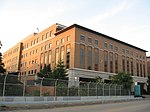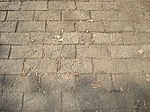UPMC Shadyside

UPMC Shadyside is a nationally ranked, 520-bed non-profit, tertiary, teaching hospital located in the Shadyside neighborhood of Pittsburgh, Pennsylvania. UPMC Shadyside is a part of the University of Pittsburgh Medical Center (UPMC), and grouped in with the flagship UPMC Presbyterian. The hospital is near UPMC's flagship campus which houses Presbyterian and Montefiore. As the hospital is a teaching hospital, it is affiliated with University of Pittsburgh School of Medicine. The hospital has an emergency room to handle emergencies, with a rooftop helipad to transport critical patients to and from the hospital. UPMC Shadyside houses the flagship campus of the UPMC Hillman Cancer Center, a nationally ranked cancer hospital.Founded in as the Homeopathic Medical and Surgical Hospital and Dispensary, it changed its name to that of the neighborhood of Shadyside on May 12, 1938. Shadyside agreed to be bought by UPMC on June 5, 1996.
Excerpt from the Wikipedia article UPMC Shadyside (License: CC BY-SA 3.0, Authors, Images).UPMC Shadyside
Centre Avenue, Pittsburgh
Geographical coordinates (GPS) Address Phone number Website External links Nearby Places Show on map
Geographical coordinates (GPS)
| Latitude | Longitude |
|---|---|
| N 40.454638 ° | E -79.940056 ° |
Address
UPMC Shadyside
Centre Avenue 5230
15232 Pittsburgh
Pennsylvania, United States
Open on Google Maps









